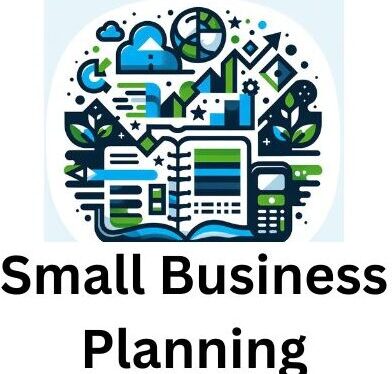
I’m going to walk you through why a business plan template can be a game-changer when you’re just starting out. This isn’t just about having an outline to scribble your ideas on; it’s also about having a roadmap that guides you through the complexities of building a business. Choosing to use a template simplifies the planning process by offering a proven structure that you’re free to customize to suit the specific needs of your venture.
I can’t emphasize enough how much time and resources you can save. Instead of starting from a blank page, you’re leveraging a framework that’s designed to help you avoid common mistakes and pitfalls. It ensures that you don’t miss any critical parts of your plan like market analysis, operation strategies, or financial projections.
So my question to you today is, are you ready to make the business planning process more efficient and less daunting? If you want to start on the right foot, utilizing a business plan template can set you up for success. Now, with the ‘why’ covered, you’re probably wondering, ‘How do I choose the right template?’ Don’t worry too much about it, because that’s exactly what I’m going to tackle in the next section. You can always adjust your approach down the road, but let’s first take a closer look at the available templates and find one that resonates with your business goals.
Choosing the Right Business Plan Template for Your Venture
I’m going to level with you: not all business plan templates are created equal. Choosing the right one can be the difference between a smooth start and a rough one. Now, what should you consider when picking a template for your business? There is Planning software available to help you with this task. First up, let’s talk about the variety out there. You’re going to find out about general templates that fit a range of businesses, while others are tailored for specific industries like tech startups or restaurants. It’s crucial to pick one that aligns closely with your business model. If you’re launching a coffee shop, a generic template won’t account for specifics like equipment needs or food safety protocols.
Ease of use is another biggie. You want a template that’s straightforward without requiring a deep dive into technical jargon. Choose something that resonates with you, where the language is clear, and instructions are concise.
Adaptability is key as well. Make sure the template is flexible enough to accommodate your unique products or services. It should be a living document that grows with your business — not something set in stone.
Lastly, don’t underestimate the value of guidance and examples. The best business plan templates come with explanations for each section, tips on what to include, and real-world examples to inspire you. This isn’t just about filling in the blanks; it’s about understanding the why and how behind each component.
Personalizing Your Business Plan
Choosing a business plan template is just the beginning. What comes next is making that template work for you – and that means personalization. You’re going to find out about tweaking it to truly reflect what your business is all about.
First, you’ll want to inject your brand voice into every section of the plan. Whether your brand is professional, quirky, or anything in between, that voice should be consistently audible through your words and tone. Choose something that resonates with you and your customers.
Then there’s your USP, or Unique Selling Proposition. This isn’t just a catchy phrase; it’s the bedrock of your business identity. Highlighting your USP in the plan sets you apart from the competition from the get-go.
Market research and analysis shouldn’t be mere statistics and numbers; they need life, context, and interpretation. You can always adjust your approach down the road, but at this stage, be sure to weave a compelling narrative about what the data means for your business.
Your marketing strategy and operational plan shouldn’t be generic either. I’m here to help you with outlining your strategies and operations in a way that is tailor-made for your business targets and customer base.
Lastly, making financial projections can seem daunting, but don’t worry too much about being off by a bit. Use the data you have and project your financials with reasonable accuracy. Remember, these projections are going to guide you, not tie you down.
Turning Your Plan into Action
So my question to you today is, how do you take the leap from a well-crafted business plan to tangible results? It’s not enough to have a document that lays out your business strategy; the real challenge lies in implementation. I’m going to walk you through transforming your business plan into action that brings your vision to life.
Your business plan isn’t just a static piece of paper; think of it as a dynamic blueprint for success. Start by setting clear, achievable objectives. These are your signposts that guide you and keep you on track. Choose something that resonates with you and your business ideals—because when your goals align with your passion, you’re more likely to commit to them.
Creating a roadmap with detailed milestones and timelines is crucial. This isn’t just about marking dates on a calendar; it’s also about breaking down your grand vision into digestible chunks. You can always adjust your approach down the road, but having these checkpoints allows for regular reviews and realignments based on your progress.
And talking about progress, allocating resources effectively and assigning responsibilities to the right team members can make or break your business venture. Ensure everyone knows their role in driving the business forward. This not only promotes accountability but also fosters a culture of ownership and team spirit.
Finally, monitor your progress meticulously. Don’t worry too much about hiccups along the way. They are inevitable, and often, they present opportunities for learning and growth. If you find yourself straying from your original plan, that’s your opportunity to revisit and adjust. Flexibility is a valuable trait in the fast-paced business environment.
Remember, your first attempt doesn’t need to be your last. Use your business plan as a living document that evolves. It’s a tool to communicate not just with your core team but also with potential investors and partners. Leverage it to demonstrate your commitment and the potential of your business idea.
Now, you’re armed with not just a plan but a strategy to make that plan work for you. You’ve got this! It’s a lot of work, but it’s going to be worth it when you see your business grow and thrive.
